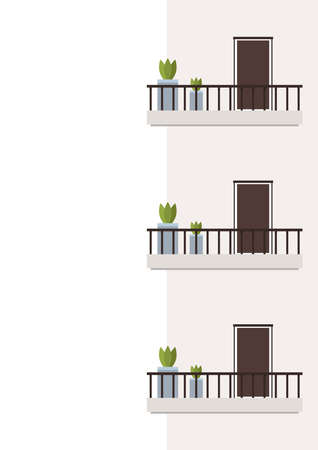Introduction to Pergolas
Pergolas have become a staple in American backyard design, offering a stylish and functional way to expand your living space into the outdoors. But what exactly is a pergola? At its core, a pergola is an open-air structure with vertical posts supporting crossbeams or an open lattice roof. This classic design has roots that trace back to ancient Mediterranean gardens, but pergolas have evolved to fit modern American lifestyles and tastes. Over the decades, they’ve been embraced across the U.S. as homeowners seek versatile solutions for outdoor living and entertaining. Today, pergolas are more than just garden accents—they provide shade, define patio areas, and serve as inviting extensions of the home. Their popularity is surging as Americans look for ways to enjoy their yards year-round, blending comfort, style, and functionality in one elegant feature.
Benefits of Pergolas for Outdoor Living
Pergolas offer a variety of practical and aesthetic benefits that make them an excellent choice for enhancing outdoor living spaces. Homeowners across the United States are discovering how these versatile structures can transform patios, backyards, and gardens into comfortable extensions of the home. Below, we highlight some of the key advantages of incorporating a pergola into your outdoor space.
Practical Advantages
Pergolas are designed to create a more functional outdoor environment. One of their primary benefits is providing shade, which allows you to enjoy your backyard even during the heat of summer. With optional features like retractable canopies or climbing vines, you can easily control the amount of sunlight that filters through. This flexibility makes pergolas ideal for dining, entertaining, or simply relaxing outdoors in comfort.
| Feature | Benefit |
|---|---|
| Shade Coverage | Reduces direct sunlight and lowers outdoor temperatures |
| Open-Air Design | Promotes airflow while still offering protection from harsh sun rays |
| Customizable Add-ons | Options like curtains or screens provide additional privacy and weather resistance |
Aesthetic Appeal
A well-designed pergola adds instant architectural interest to any backyard. Its clean lines and defined structure serve as a focal point, complementing various landscape styles—from modern to traditional. Homeowners can personalize pergolas with finishes, colors, and accessories to match their homes exterior design. Additionally, pergolas serve as beautiful frames for garden features such as lighting fixtures or hanging plants, further enhancing curb appeal.
Increased Home Value
Investing in a pergola is not just about lifestyle—it can also deliver financial benefits. Outdoor living spaces are highly desirable among American homebuyers. By creating a dedicated area for relaxation and entertaining, a pergola increases both the functionality and perceived value of your property. Many real estate professionals note that well-maintained outdoor structures often lead to higher resale values and faster sales.
Summary Table: Pergola Benefits at a Glance
| Advantage Type | Description |
|---|---|
| Practical Use | Provides shade, comfort, and versatility for outdoor activities |
| Aesthetic Value | Adds style, character, and visual interest to outdoor areas |
| Home Investment | Boosts property value and marketability with enhanced living space |
Pergolas are more than just decorative additions—they are smart investments that enhance the way you use and enjoy your home’s outdoor spaces.

3. Designing Your Pergola: Styles and Materials
When planning your outdoor living space, the design of your pergola plays a major role in both functionality and curb appeal. In American homes, popular pergola styles include traditional, modern, and rustic designs, each offering unique benefits to suit different architectural tastes. Traditional pergolas often feature classic columns and cross beams, blending seamlessly with Colonial or Craftsman-style homes. Modern pergolas emphasize clean lines and minimalistic features, making them perfect for contemporary spaces. Rustic pergolas utilize rough-hewn timbers or reclaimed wood to create a cozy, inviting atmosphere ideal for farmhouse or cabin settings.
Material selection is equally important for longevity and maintenance. Wood remains a favorite due to its natural look and adaptability; cedar and redwood are especially popular as they resist rot and insects, making them great choices for many American climates. However, wood does require regular sealing or staining to maintain its appearance. Vinyl pergolas are another top pick for homeowners seeking low-maintenance solutions. They withstand moisture and UV rays well, making them suitable for humid or rainy regions like the Southeast or Pacific Northwest. For ultimate durability, aluminum pergolas offer rust-resistance and can handle extreme weather conditions without warping or fading—ideal for hot Southern states or areas prone to heavy storms.
When choosing your pergola style and material, consider your home’s architecture, local climate, and how much time you want to spend on maintenance. A thoughtfully designed pergola not only extends your living space outdoors but also adds lasting value to your property.
4. Integrating Pergolas into Outdoor Living Spaces
Pergolas are a versatile feature that can transform any backyard into a functional outdoor living area. By strategically placing pergolas, homeowners can define specific zones for dining, lounging, and entertaining, making their outdoor spaces both stylish and purposeful. Whether your yard includes a patio, deck, or garden, a pergola serves as an architectural anchor that helps organize the layout and enhances usability.
Defining Outdoor Zones with Pergolas
Pergolas naturally create boundaries without closing off space. For example, setting up a pergola over an outdoor dining table instantly establishes a dedicated eating area separate from the rest of the yard. Similarly, a pergola can frame a lounge space furnished with comfortable seating, making it inviting for relaxation or conversation.
| Outdoor Zone | Pergola Placement Ideas | Suggested Features |
|---|---|---|
| Dining Area | Position pergola adjacent to kitchen or grill station | Hanging lights, weatherproof table, ceiling fan |
| Lounge Space | Place pergola near garden or water feature | Sofas, coffee tables, outdoor rugs, curtains for shade |
| Entertaining Area | Extend over deck or patio for open gatherings | Bar cart, speakers, string lights, built-in benches |
Pairing Pergolas with Patios, Decks, and Gardens
Pergolas complement hardscape features like patios and decks by adding height and dimension. When combined with paving stones or wooden decking, they offer both function and visual interest. In gardens, a pergola becomes a focal point—perfect for training climbing plants or creating a shaded retreat amid landscaping. This pairing not only boosts curb appeal but also encourages more time spent outdoors.
Tips for Seamless Integration:
- Coordinate Materials: Match your pergola’s materials to existing structures for a cohesive look—think cedar with wooden decks or metal frames with modern patios.
- Add Lighting: String lights or lanterns under the pergola enhance ambiance after sunset and extend usability.
- Incorporate Greenery: Use planters or trellises to blend the pergola into surrounding gardens for a natural transition between spaces.
- Create Flow: Position walkways or stepping stones leading to each pergola-defined zone to encourage movement throughout your outdoor living area.
Pergolas as Entertaining Hubs
For American homeowners who love to host cookouts and family gatherings, pergolas provide shelter and structure that support year-round entertaining. With thoughtful integration alongside patios and gardens, these features allow you to enjoy al fresco meals in summer or cozy up around a fire pit in fall—all within well-defined, inviting spaces.
5. Pergola Accessories and Enhancements
One of the best ways to make your pergola a true extension of your home is by adding functional accessories that cater to American lifestyles.
Lighting Solutions
Lighting plays a crucial role in transforming a pergola into an inviting outdoor living space, especially for evening gatherings or late-night relaxation. String lights, LED fixtures, and even solar-powered lanterns are popular choices across the U.S., providing both ambiance and practicality.
Retractable Canopies
With weather often unpredictable, retractable canopies are a sought-after enhancement for pergolas. They offer flexible shade options during hot summer days and can be retracted to enjoy the sun or stargazing at night. These canopies are ideal for maximizing comfort and usability throughout the seasons.
Ceiling Fans
To beat the heat during warmer months, many Americans install ceiling fans designed for outdoor use. Not only do they keep the air circulating, but they also help deter bugs, making outdoor dining or lounging much more pleasant under your pergola.
Outdoor Curtains
Outdoor curtains add both style and privacy to your pergola. They’re perfect for blocking harsh sunlight, reducing wind exposure, or simply creating a cozier, more intimate environment. Available in various colors and fabrics, curtains allow homeowners to customize their outdoor space according to their taste and needs.
Blending Functionality with Style
The right mix of enhancements can transform your pergola from a simple structure into a personalized oasis that supports relaxation, entertainment, and day-to-day living—all while reflecting the latest trends in American outdoor design.
6. Pergola Installation and Maintenance Tips
Choosing Professional vs. DIY Installation
When adding a pergola to your outdoor living space, one of the first decisions youll face is whether to hire a professional or take the DIY route. Professional installation ensures expert craftsmanship, adherence to local building codes, and often includes warranties for peace of mind. It’s a great option if you want a custom design or lack construction experience. On the other hand, DIY pergola kits are widely available at home improvement stores across the U.S. These kits come with pre-cut materials and step-by-step instructions, making them accessible for those who are handy and want to save on labor costs. However, keep in mind that DIY projects require time, tools, and attention to detail.
Local Permitting Considerations
Before starting any pergola project, it’s essential to check with your local city or county permitting office. Many American municipalities have specific regulations regarding outdoor structures, including height restrictions, property line setbacks, and material guidelines. Failing to secure the right permits can lead to fines or even forced removal of your new pergola. Contacting your homeowners’ association (HOA), if applicable, is also a smart move since they may have additional rules governing exterior changes.
Ongoing Maintenance Best Practices
To keep your pergola looking great year after year, regular maintenance is key. For wood pergolas, plan on annual cleaning, sealing, or staining to protect against weathering and pests common in various U.S. climates. Vinyl and aluminum pergolas offer lower maintenance alternatives—typically requiring only occasional washing with soap and water to remove dirt and debris. Regardless of material, inspect hardware and joints each season for signs of wear or damage. Promptly address issues like loose bolts or cracked boards to ensure both safety and longevity of your outdoor living investment.
7. Inspiring Real-Life Pergola Projects
Nothing brings the idea of outdoor living to life like seeing how real American homeowners have used pergolas to transform their backyards into inviting retreats. Across the country, creative pergola projects are redefining what it means to enjoy time outdoors at home. For instance, in Austin, Texas, the Johnson family installed a cedar pergola over their patio, creating a comfortable lounge area where they host weekend barbecues and watch summer sunsets. In Portland, Oregon, the Greens added a modern metal pergola with retractable canopies, turning their rainy backyard into a year-round social hub for friends and neighbors. Meanwhile, in suburban Chicago, the Smiths built a classic white pergola draped with wisteria vines, instantly elevating their garden and providing a shaded reading nook for lazy afternoons. These stories highlight how pergolas cater to different lifestyles and climates across America—from coastal California homes seeking extra shade to Midwest families craving cozy outdoor dining spaces. Whether its integrating string lights for evening ambiance or adding privacy screens for urban settings, these real-life projects prove that a well-designed pergola can turn any yard into an extension of your homes living space. Let these inspiring examples encourage you to envision what’s possible for your own outdoor oasis.

